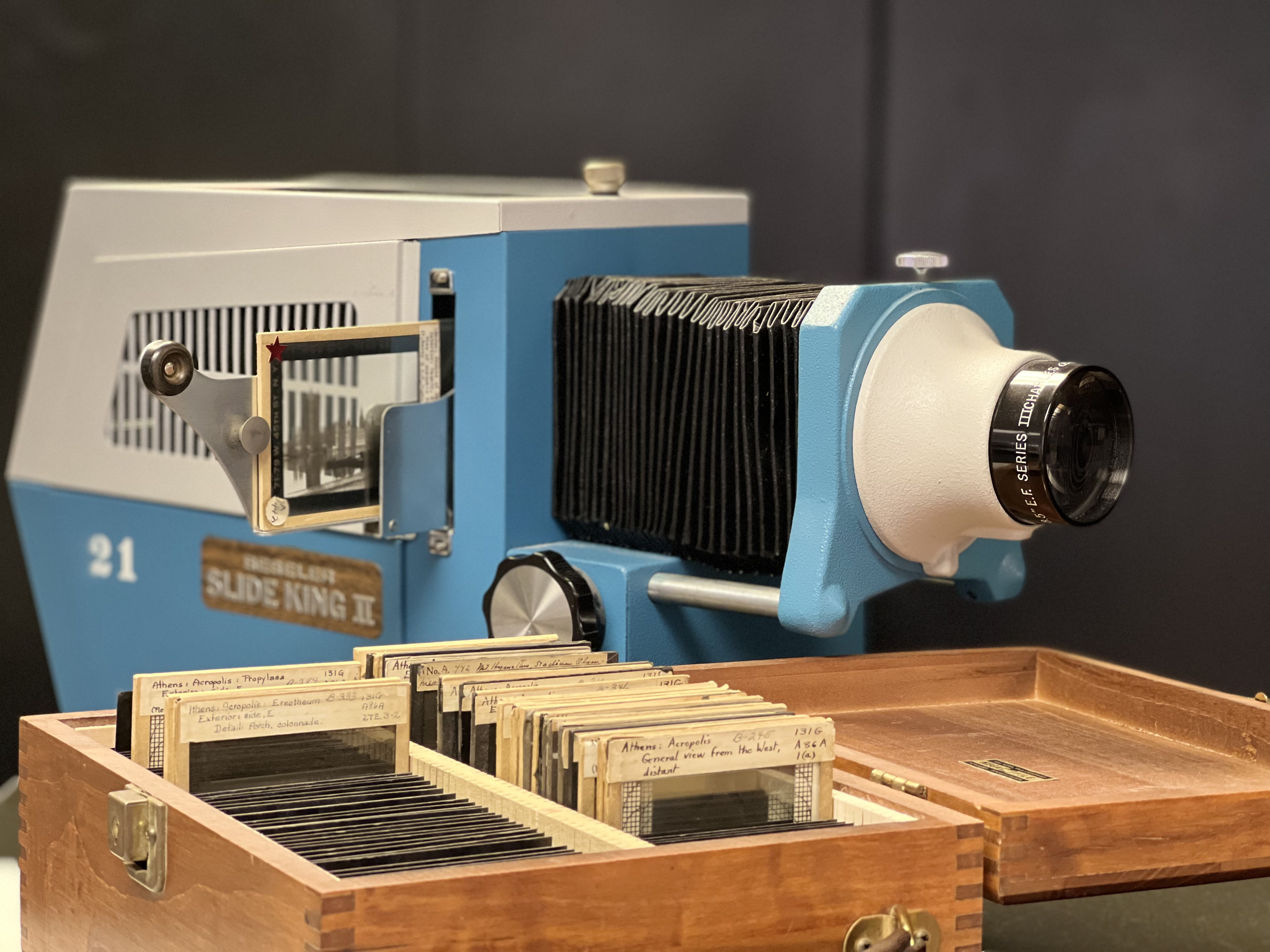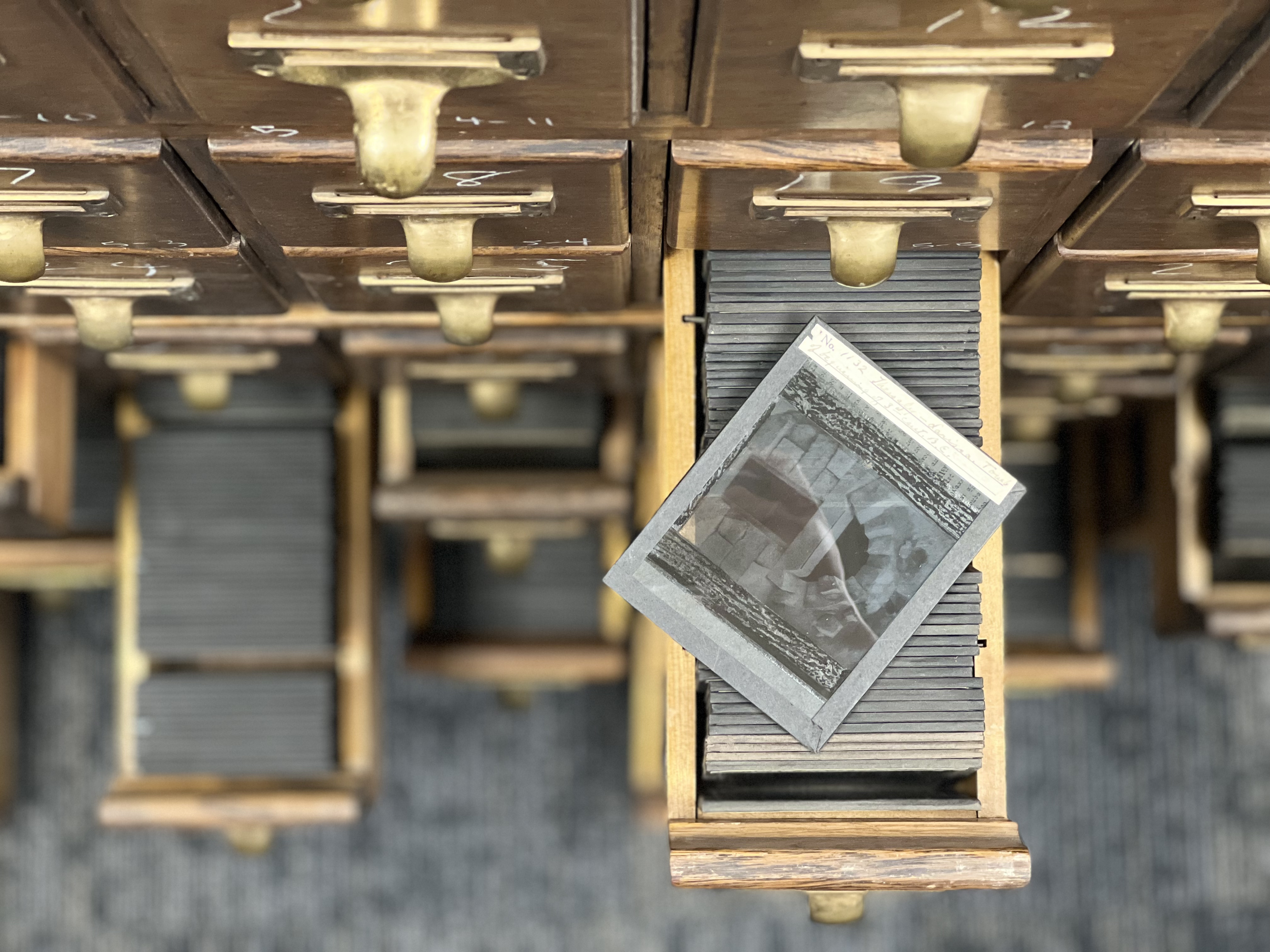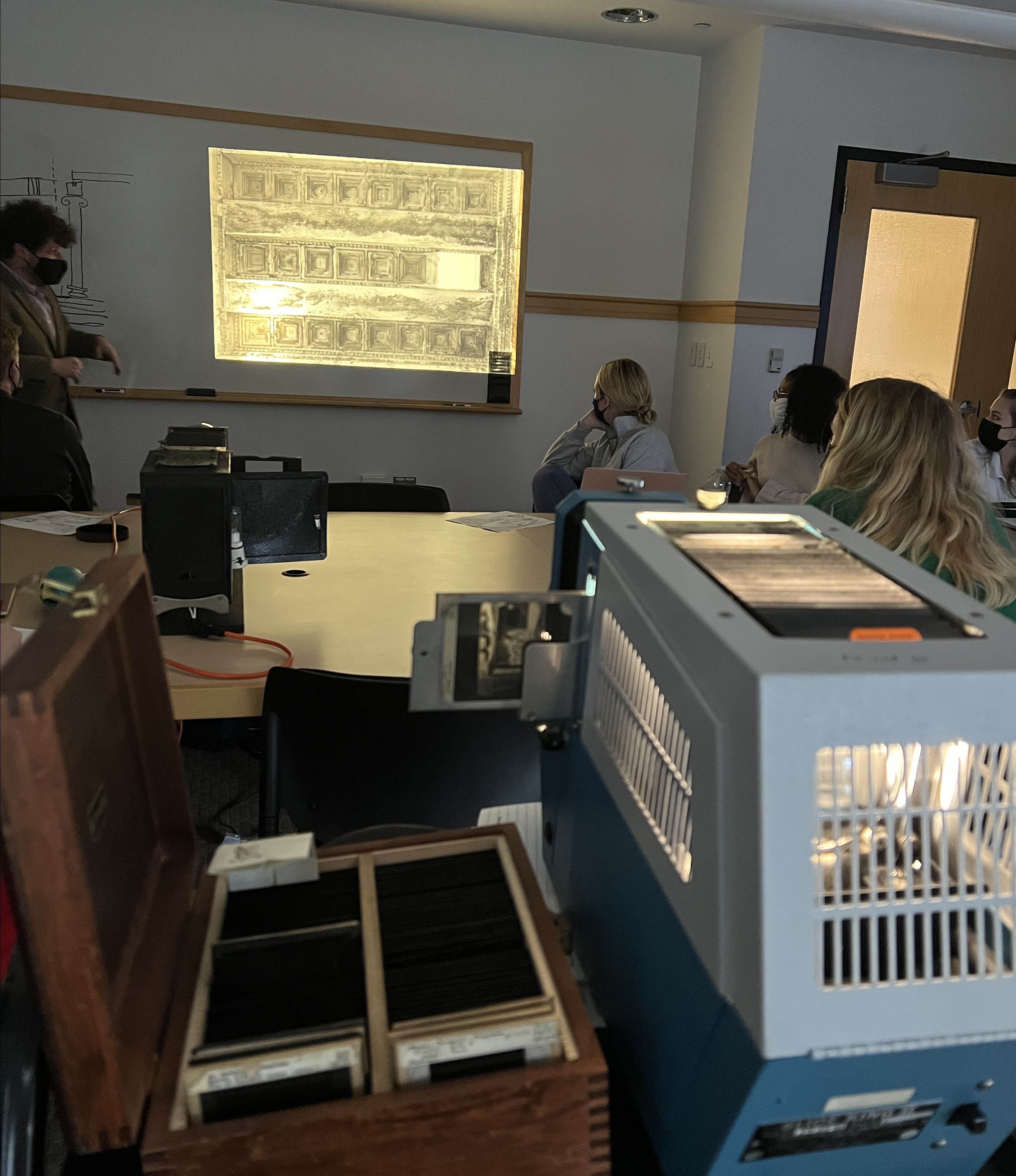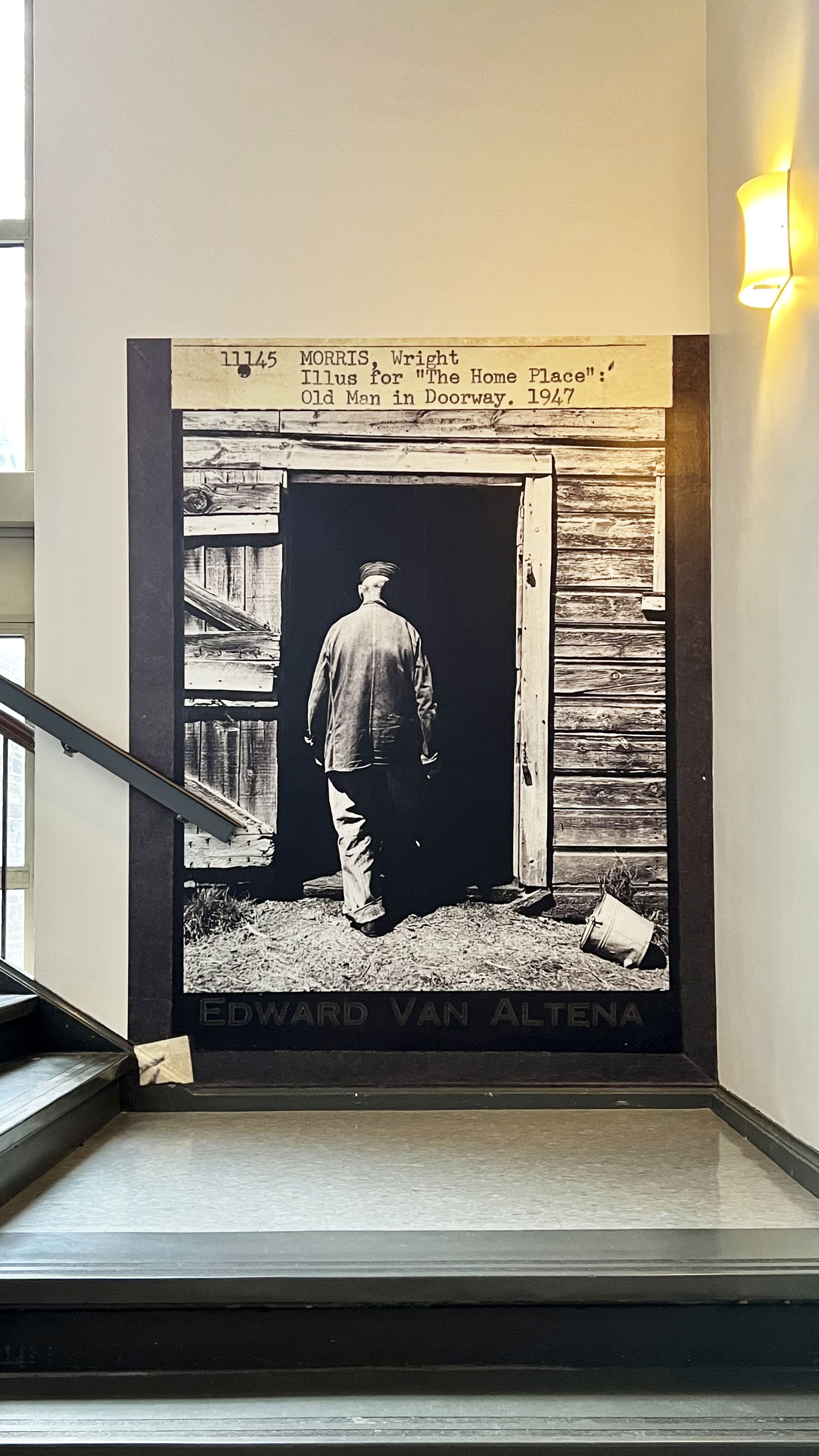Magic Lantern
Online exhibition of lantern slides
Contents: Magic Lantern | Installation in Green Hall |
Magic Lantern:
Art history through the looking glass
The magic lantern device, whose technology was famously documented by Athanasius Kircher in his Ars Magna Lucis et Umbrae or The Great Art of Light and Shadow (1646) had roots centuries before, and enjoyed widespread use until the mid 20th century. The early slides were hand-painted glass panes illuminated by flickering candlelight and projected through a lens, generating a transparent image–as if by magic. The magic lantern was used in religious spheres but settled soundly in the entertainment world: glass lantern shows were presented by missionaries, occultists and showpeople alike. With the advent of photography came slides now printed in bulk with accurate, quality exposures of even broader topics and locations than before. With the harnessing of electricity came brighter bulbs for more powerful projectors to entertain larger audiences.
Magic lantern slides entered the American classroom in the late 19th century, and as movies became the increasingly popular form of entertainment, cemented their role in academia until the 1950s when 35 mm slides emerged at a great space and cost savings. By this point there were many established international commercial slide distributors. Princeton University even became an active participant with the Color Slides Cooperative formed in 1939. Lantern slide-illustrated lectures allowed for collective viewing of details and side-by-side comparisons, facilitating discussion. Beginning with Allan Marquand (1853-1924), George Forsyth (1901-1991), Erwin Panofsky (1892-1968) and others worked with lantern slides in their classrooms. The department collection grew to over 35,000 lantern slides of teaching images and special collections, and was eventually placed in offsite storage. In 2019, Visual Resources began the task of weeding the collection, deaccessioning approximately two thirds of those slides that were either images from publications, poor quality, or of prolifically available views.
The glass lantern slide, once an established teaching tool, was a valuable media form in its own right–one that carried information for collective examination in many domains. When viewing, we often accept the image as the primary source itself and ignore that the image is transformed to some degree by humans and devices. What portion of the object to shoot, composition and exposure are determined by photographers. Color, brightness, and scale vary depending on the projecting equipment. From image-making to displaying, every step is a re-creation of the original object: lantern slide technology played a role in teaching art history while also being a part of it.
Before the digital image fundamentally changed the visual copy–and the way we view–there were projected surrogates that had us just as captivated. What was first seen as enchanting became the stalwart (and outdated) reference material being deaccessioned today. This exhibition presents a selection of Visual Resources lantern slides and their trappings. You will find images of the magic lantern apparatus, of slide notations and storage, and principally, prints of the image projections. Finally, you are invited to view a variety of glass lantern slides themselves: feel free to turn on the lightbox in 2N7. It is our hope that you get an impression of the materiality and tangibility of this engaging analog process. And with that, an element of surprise.



